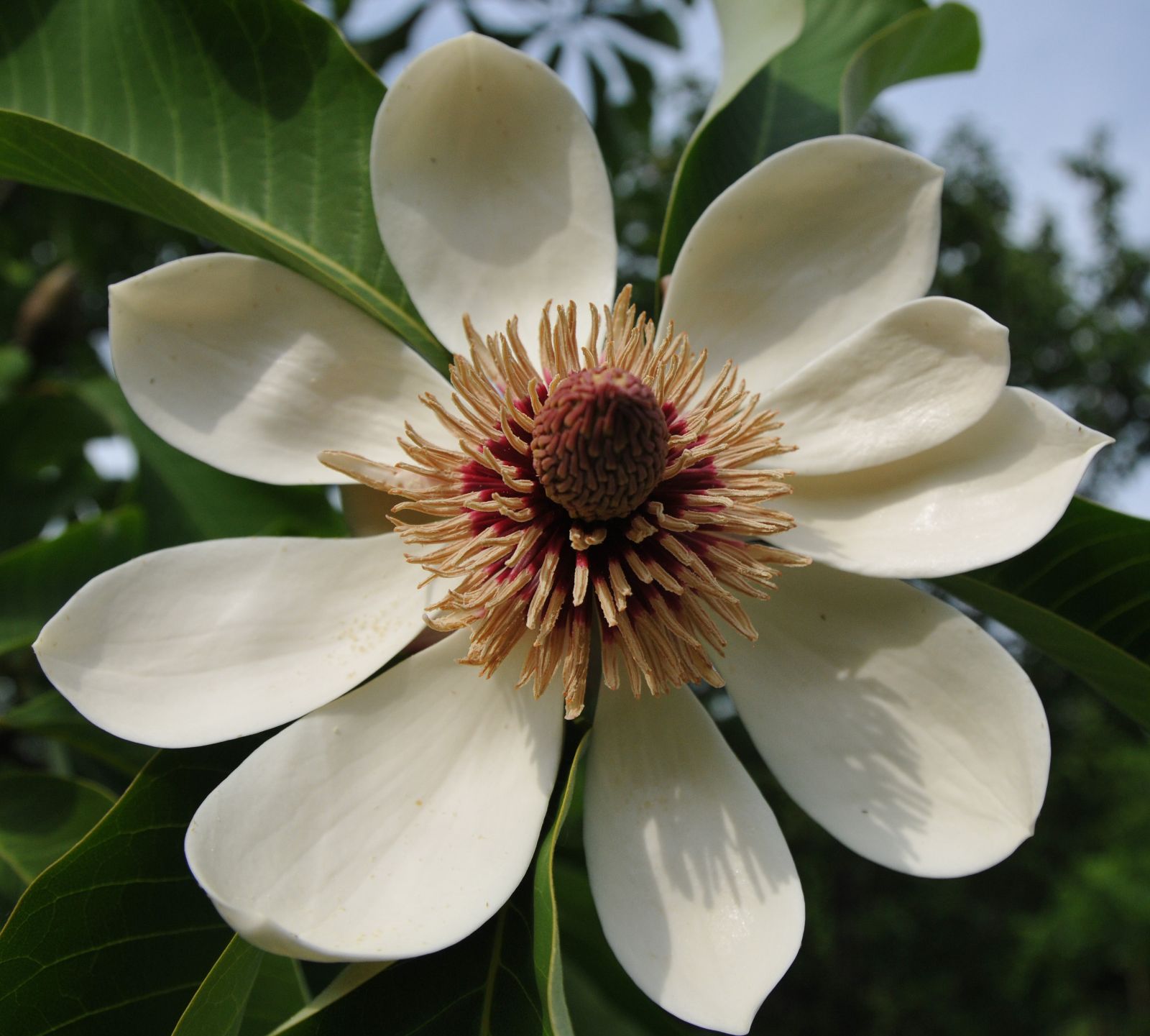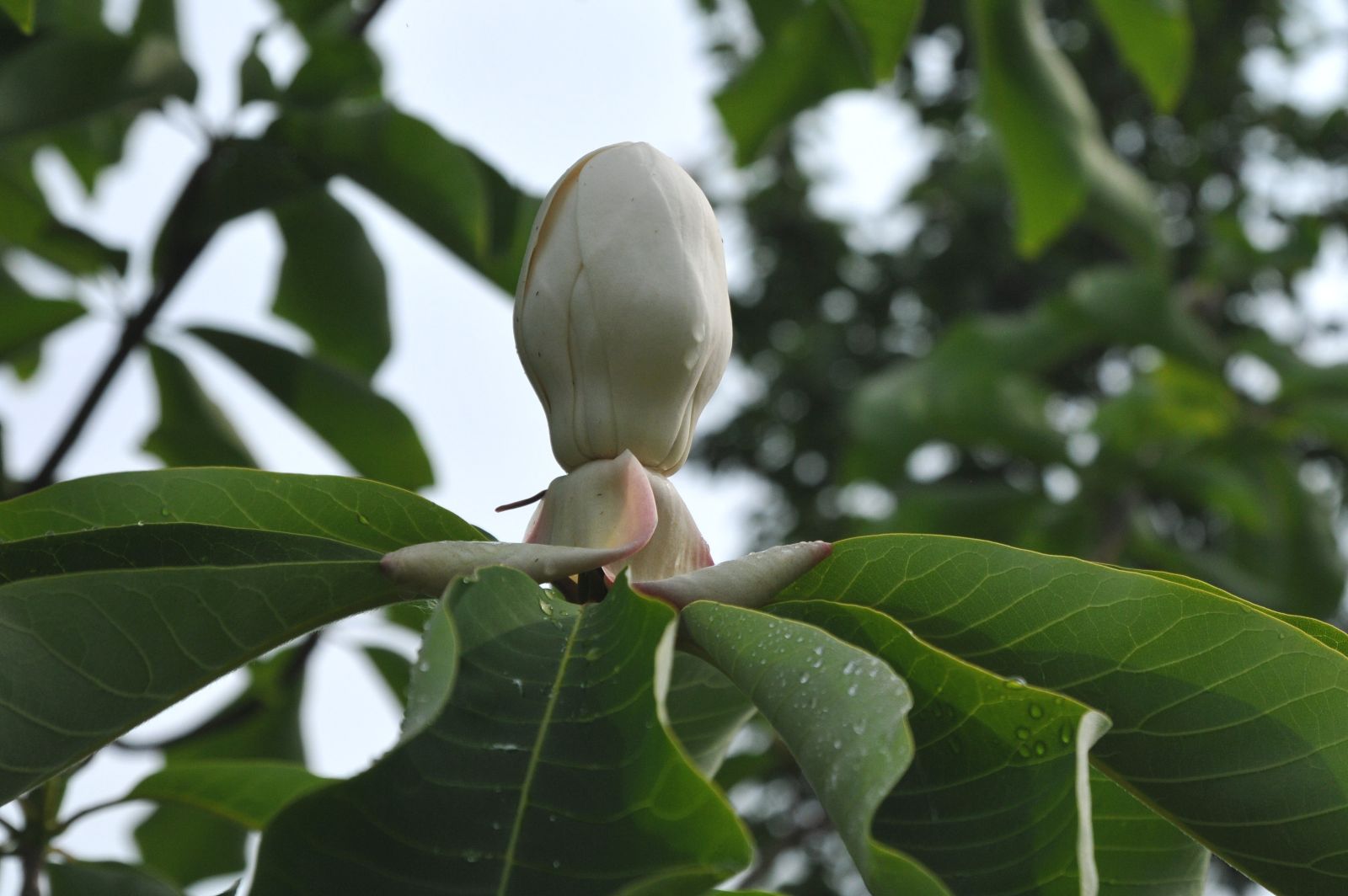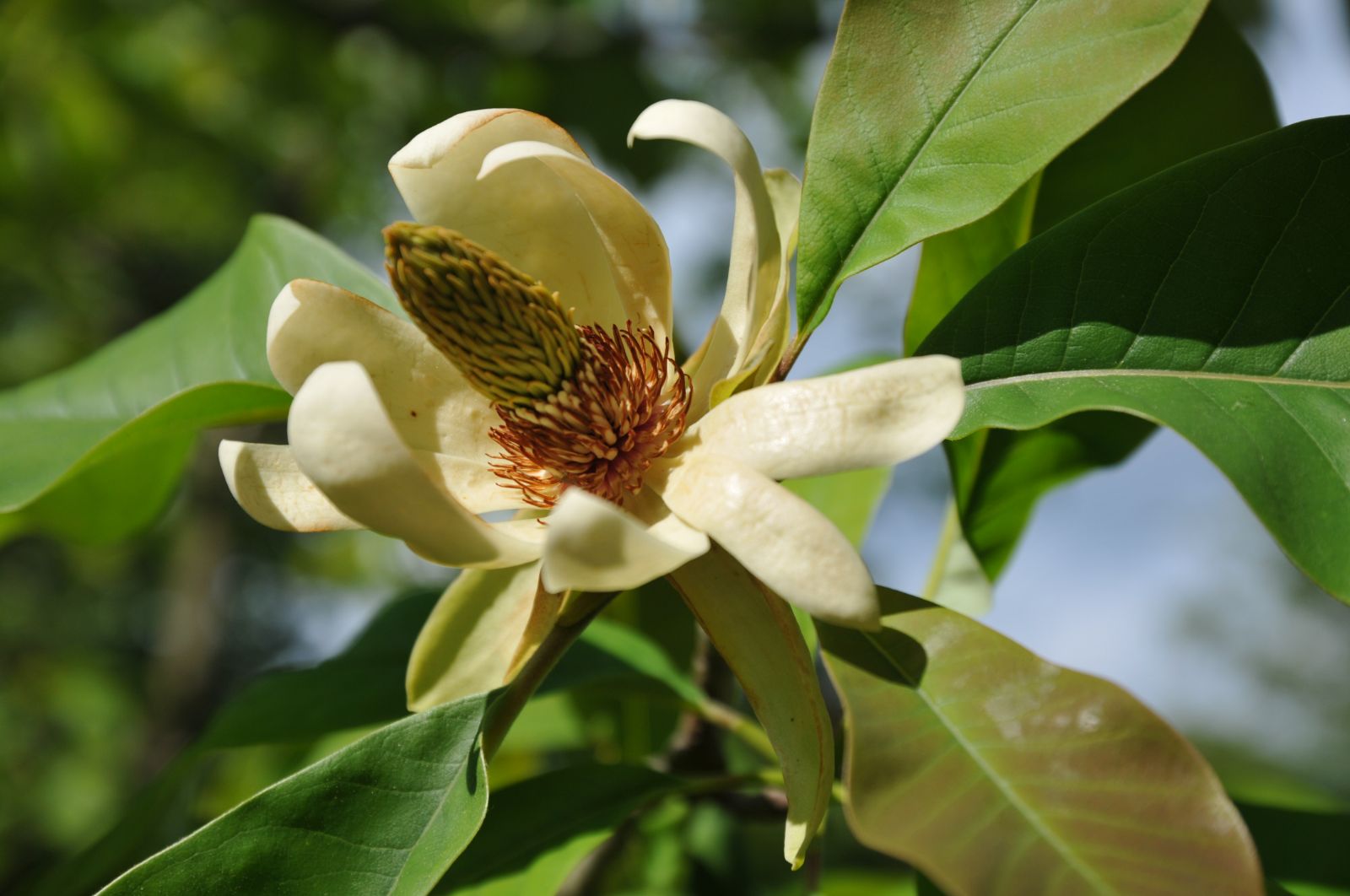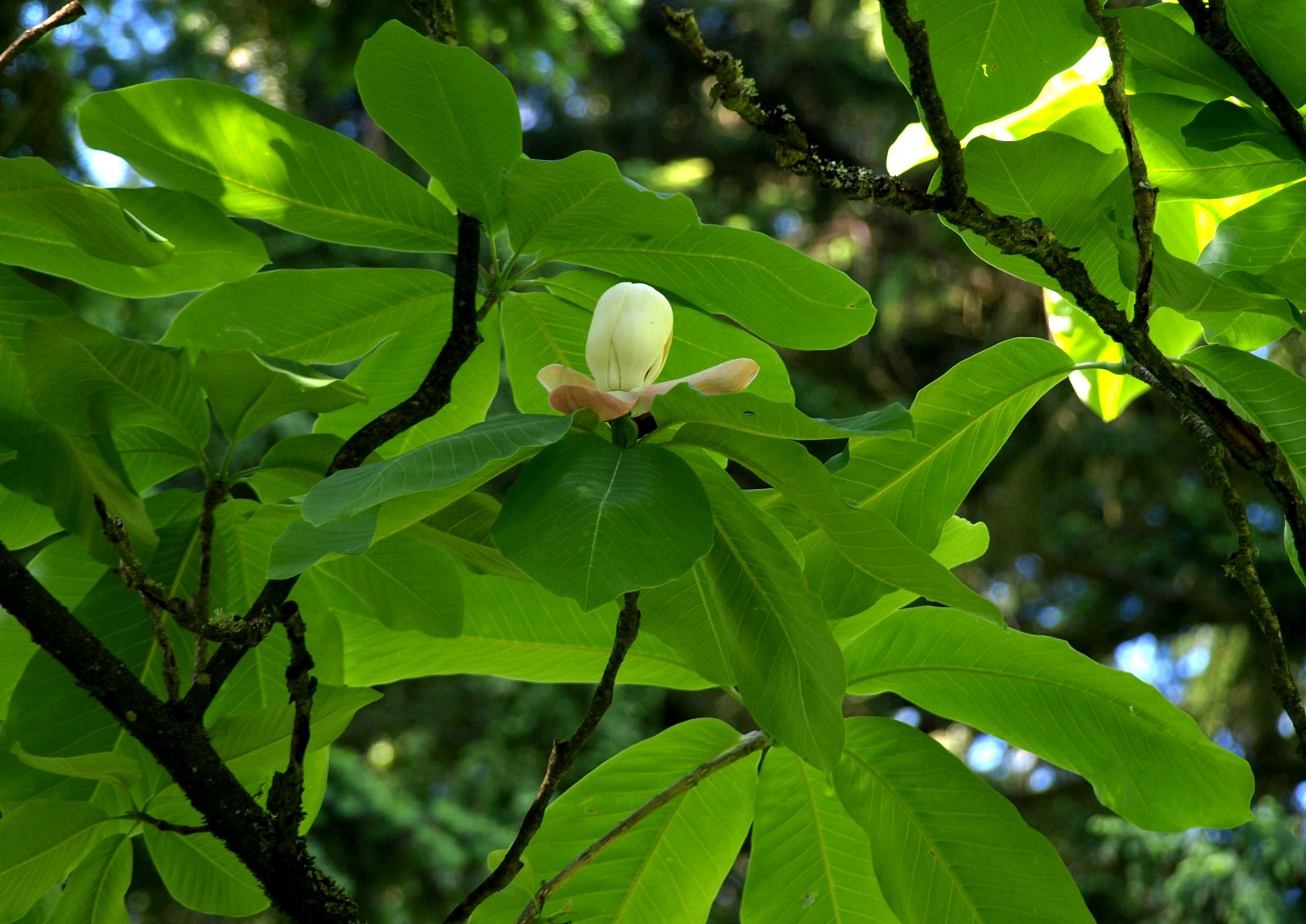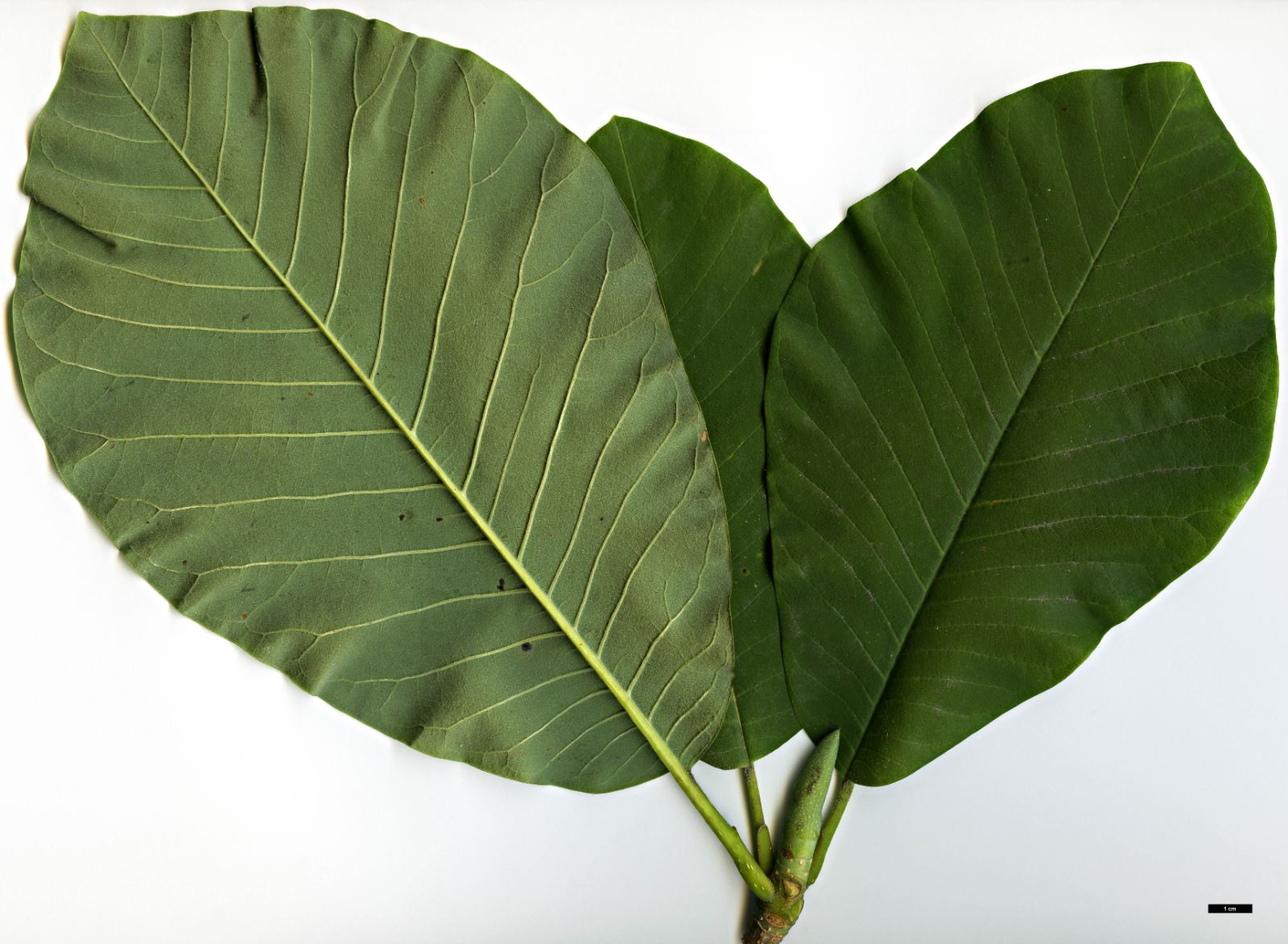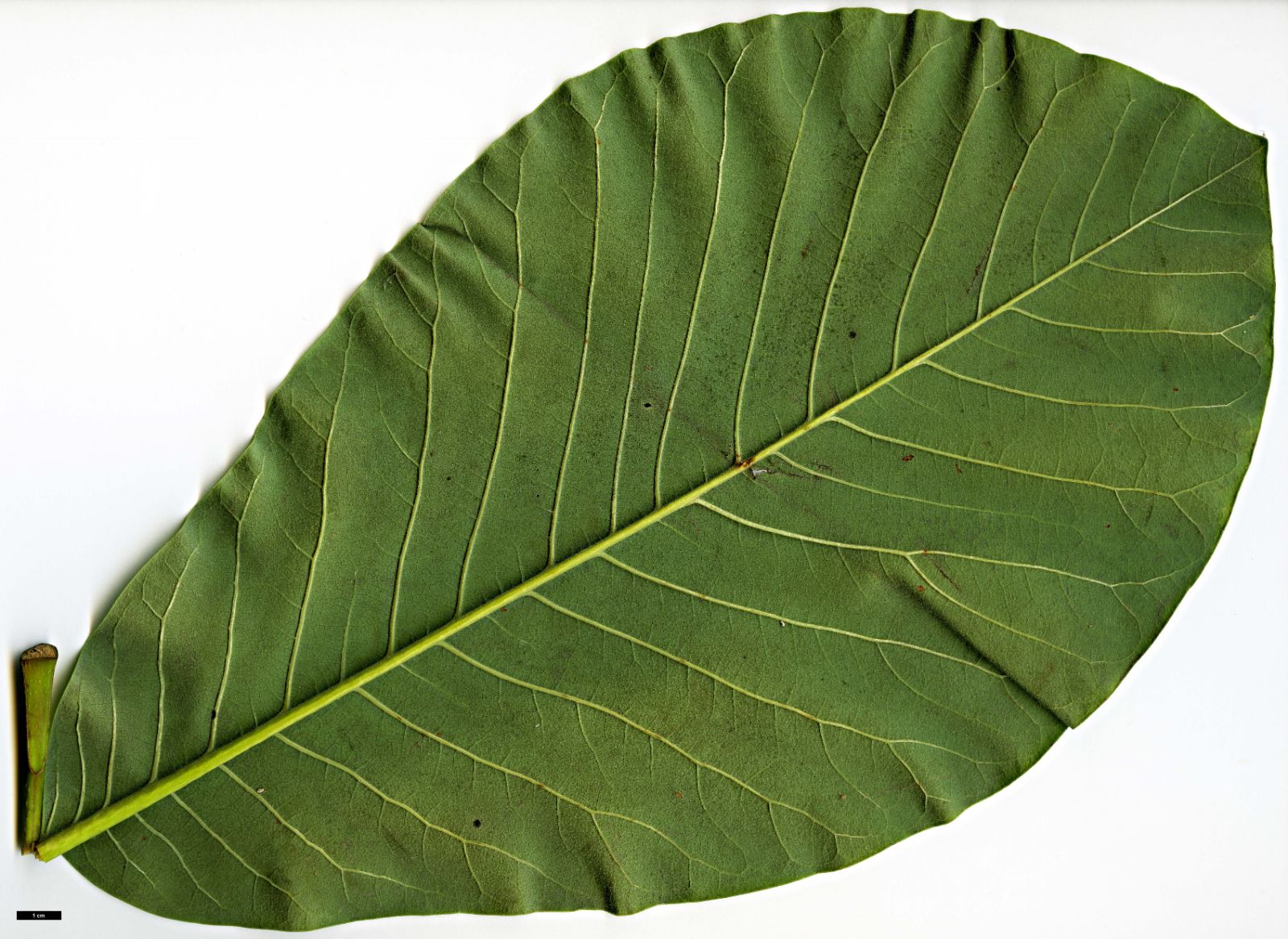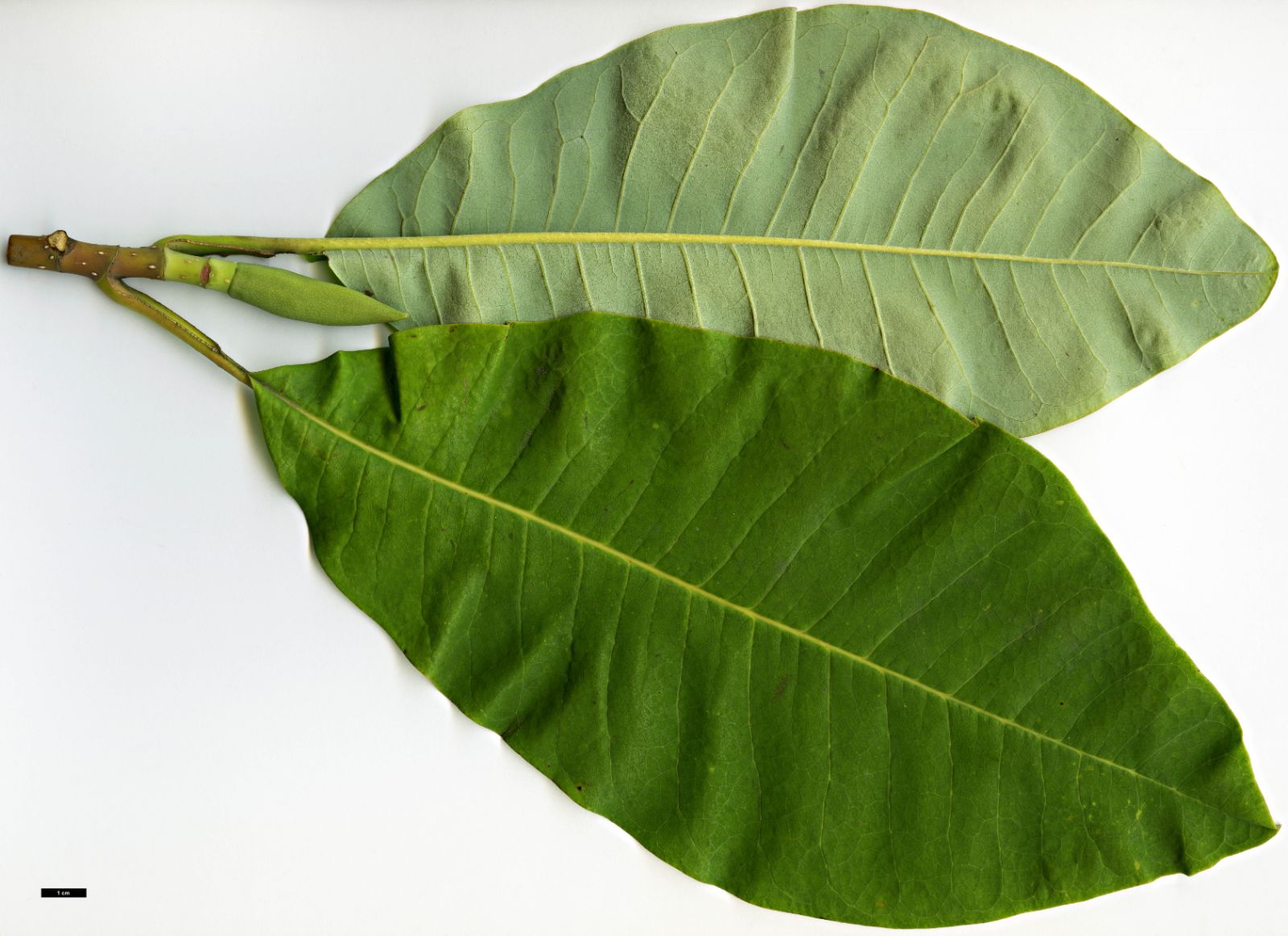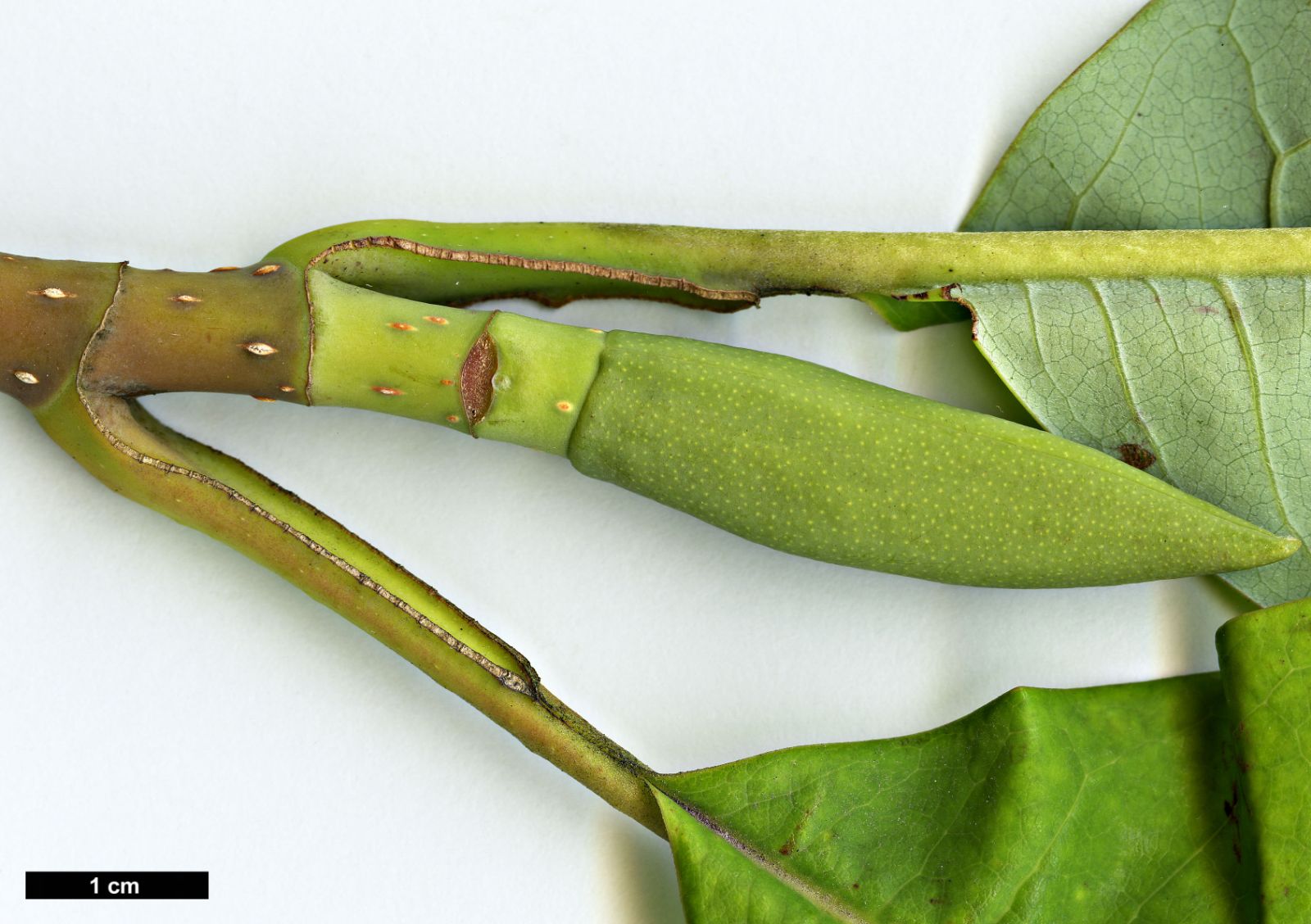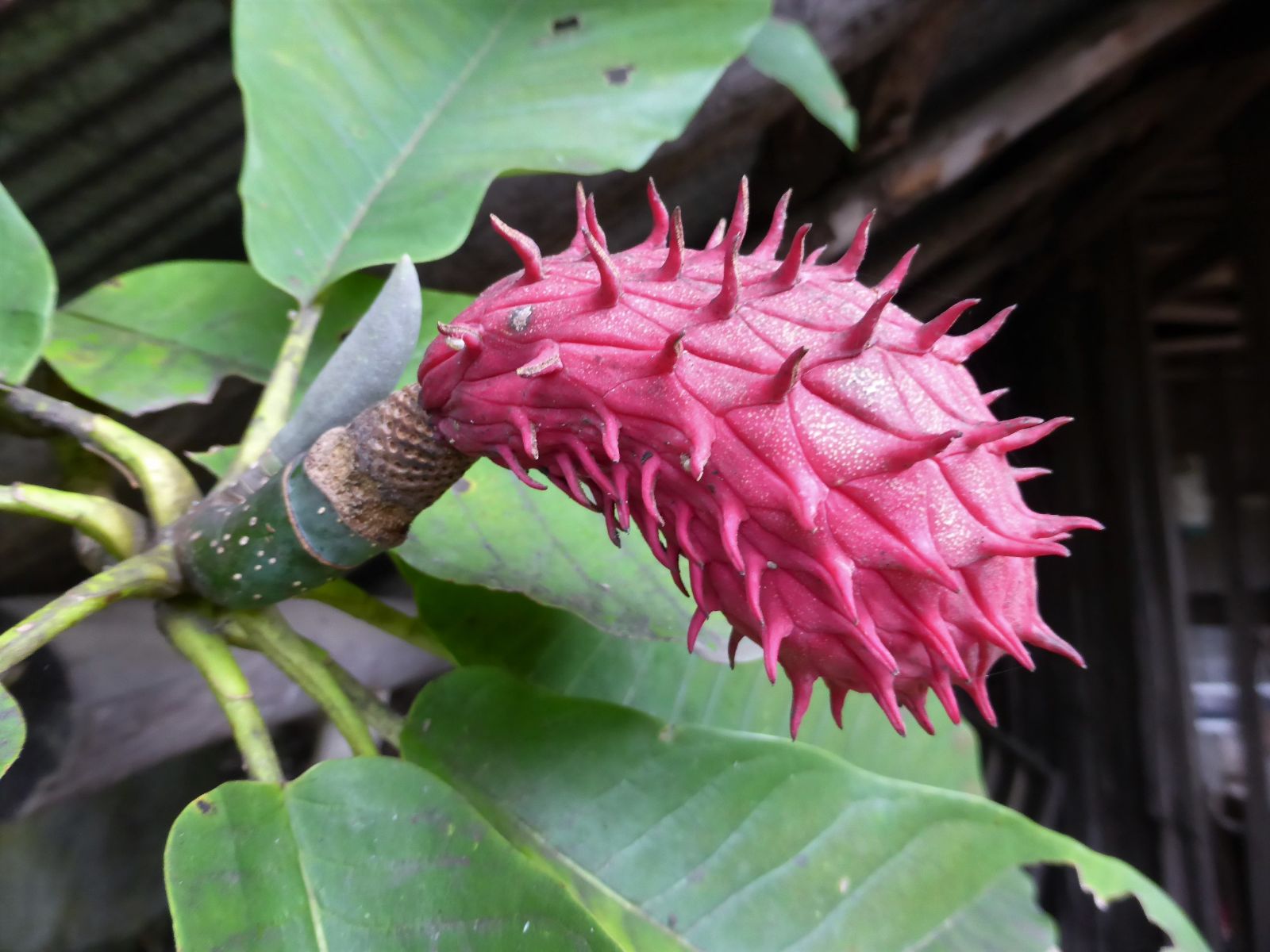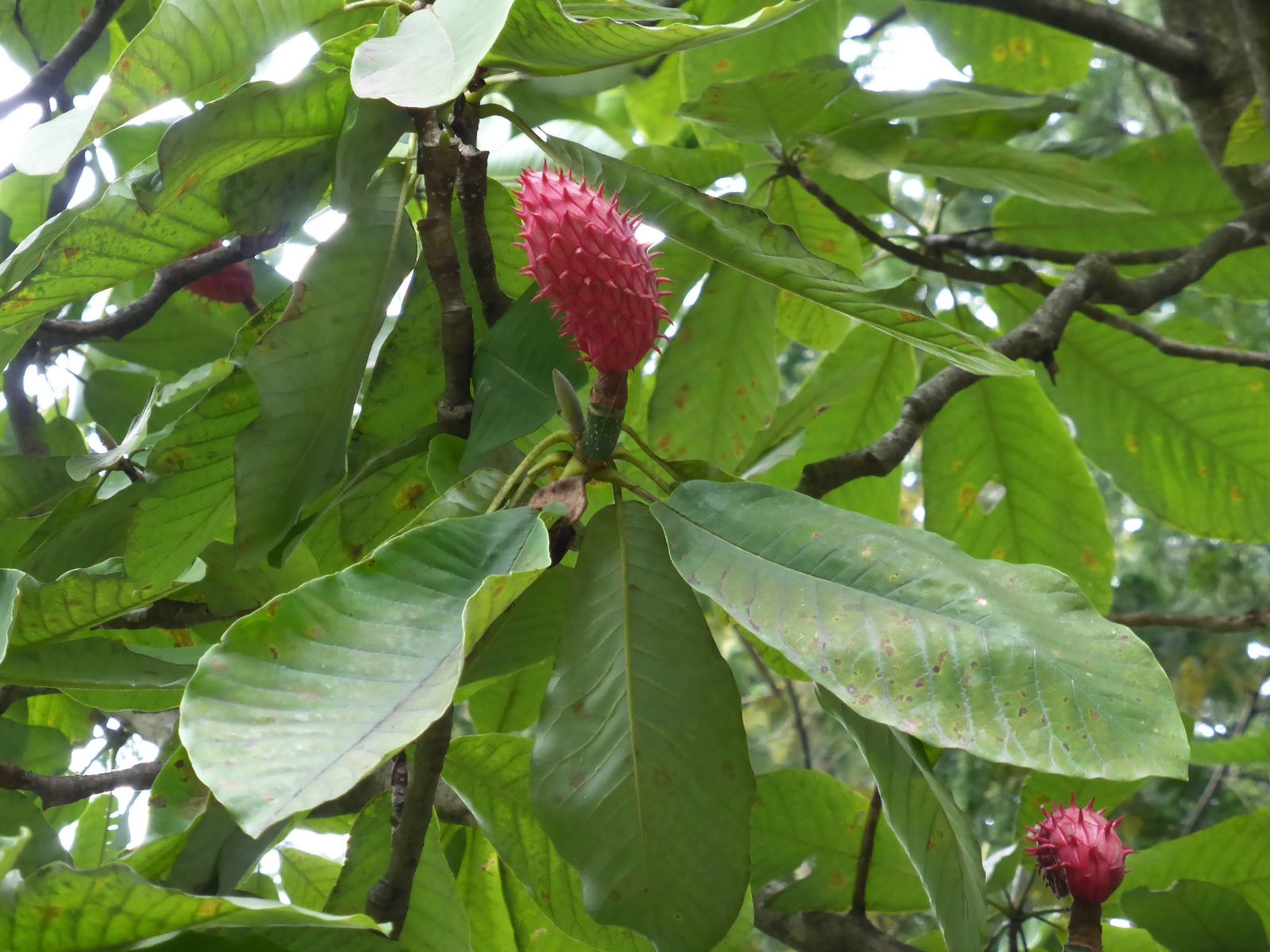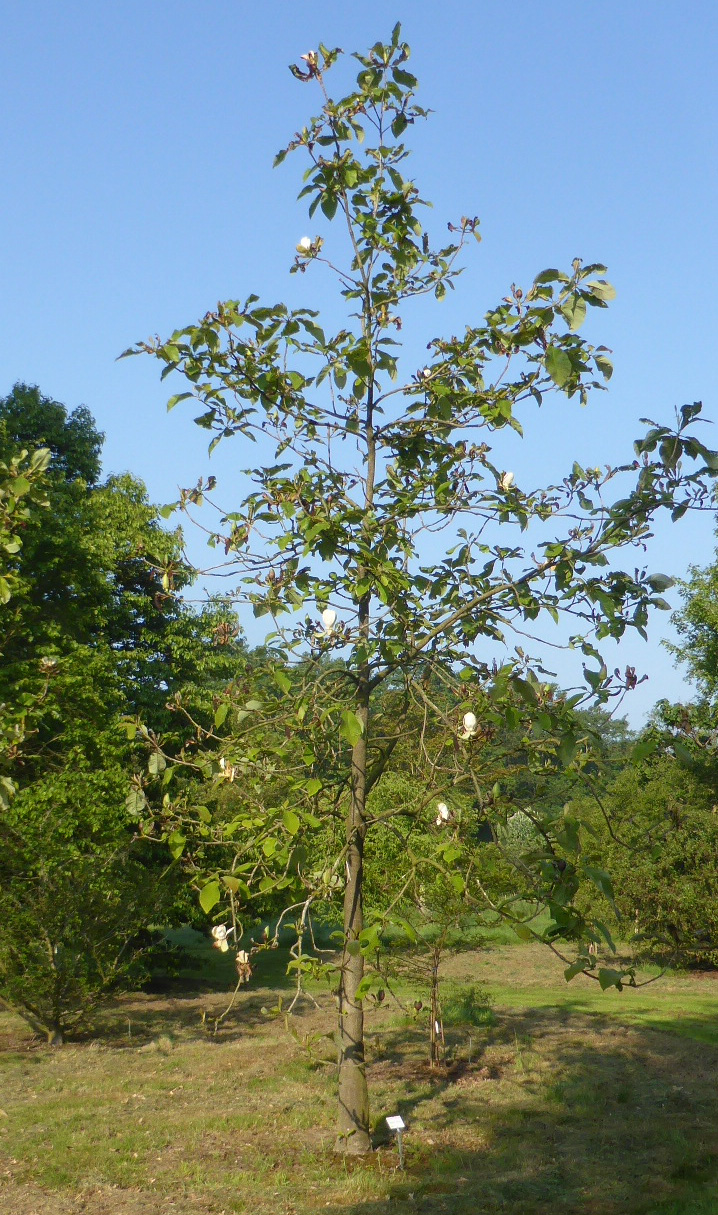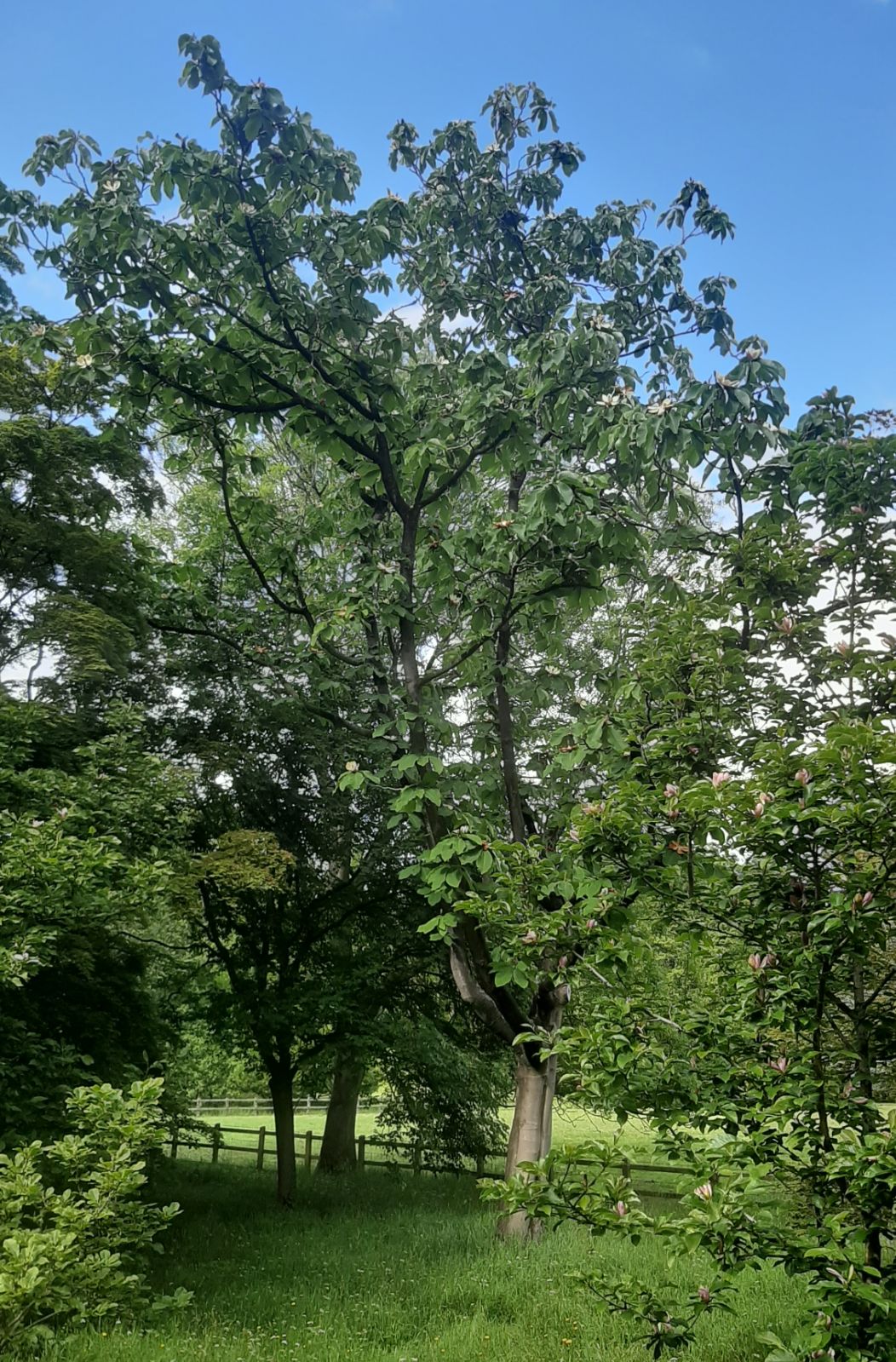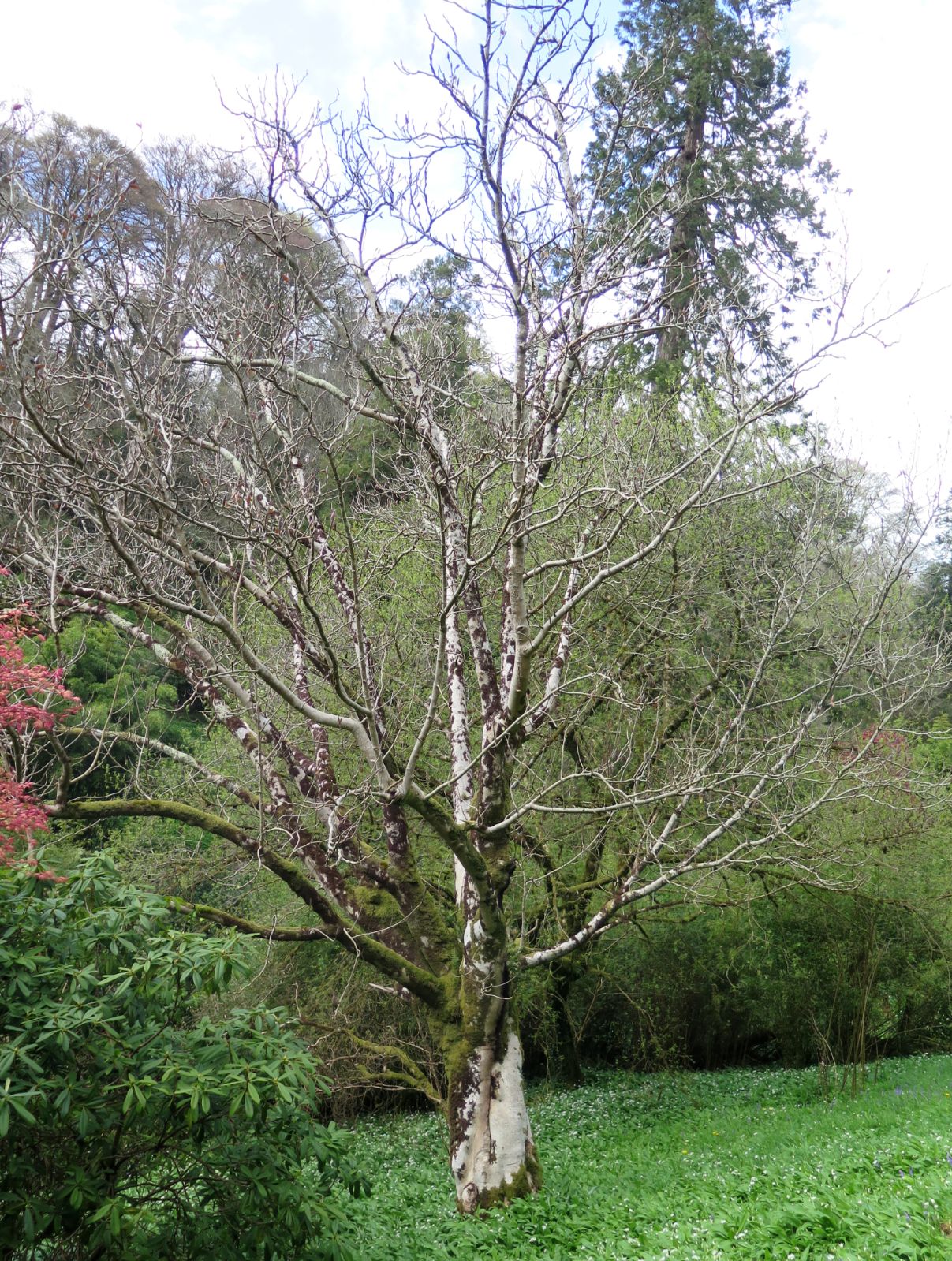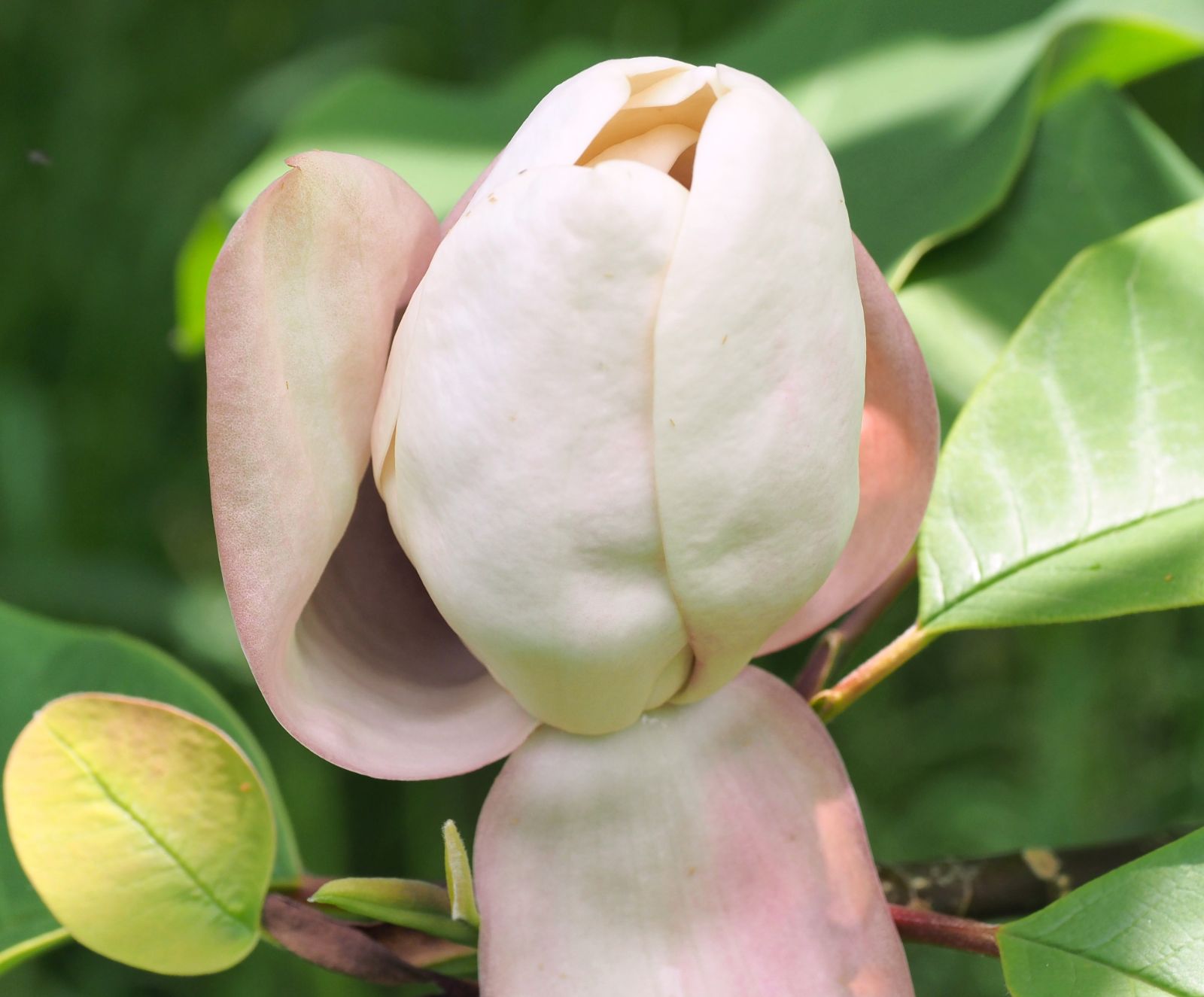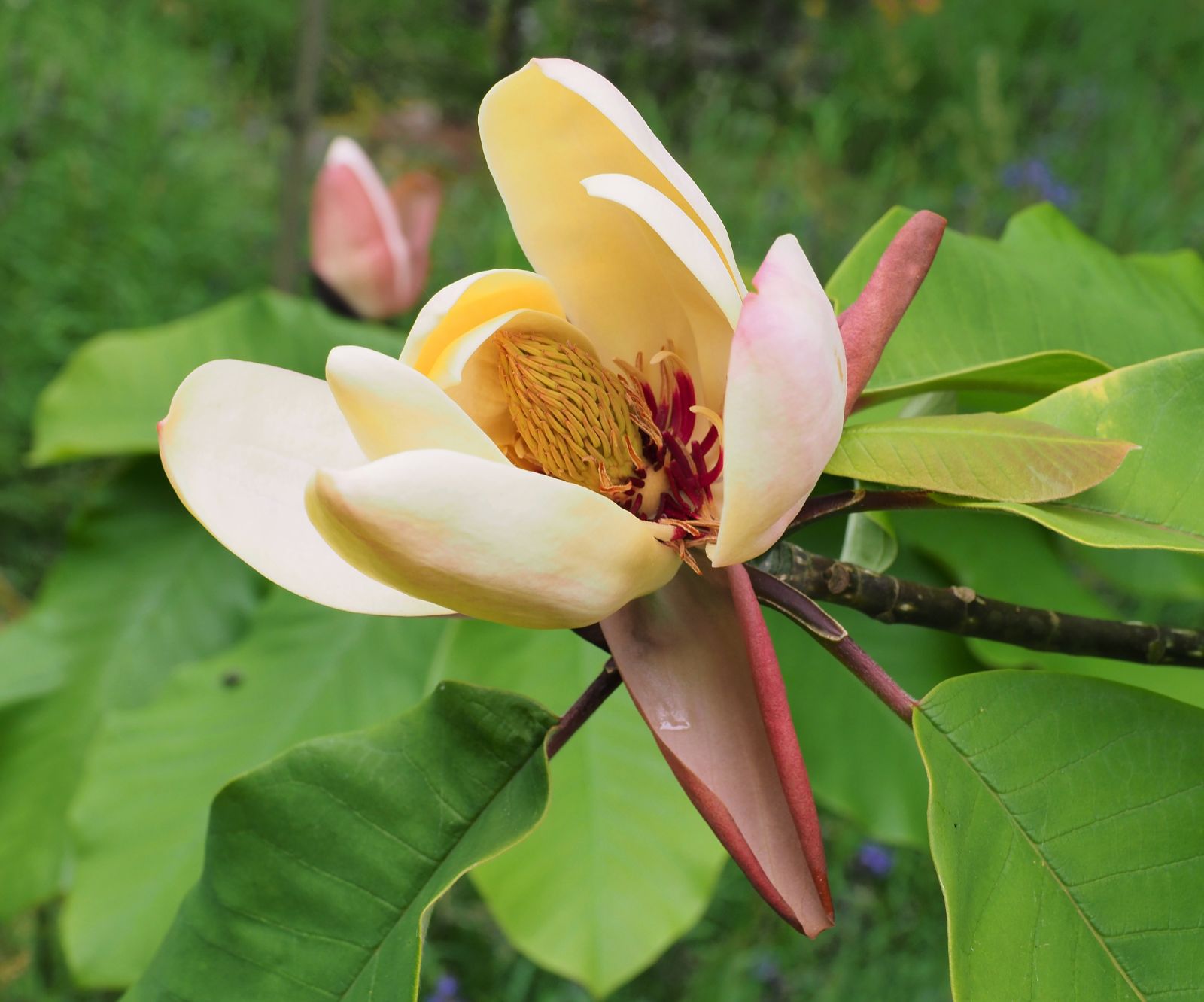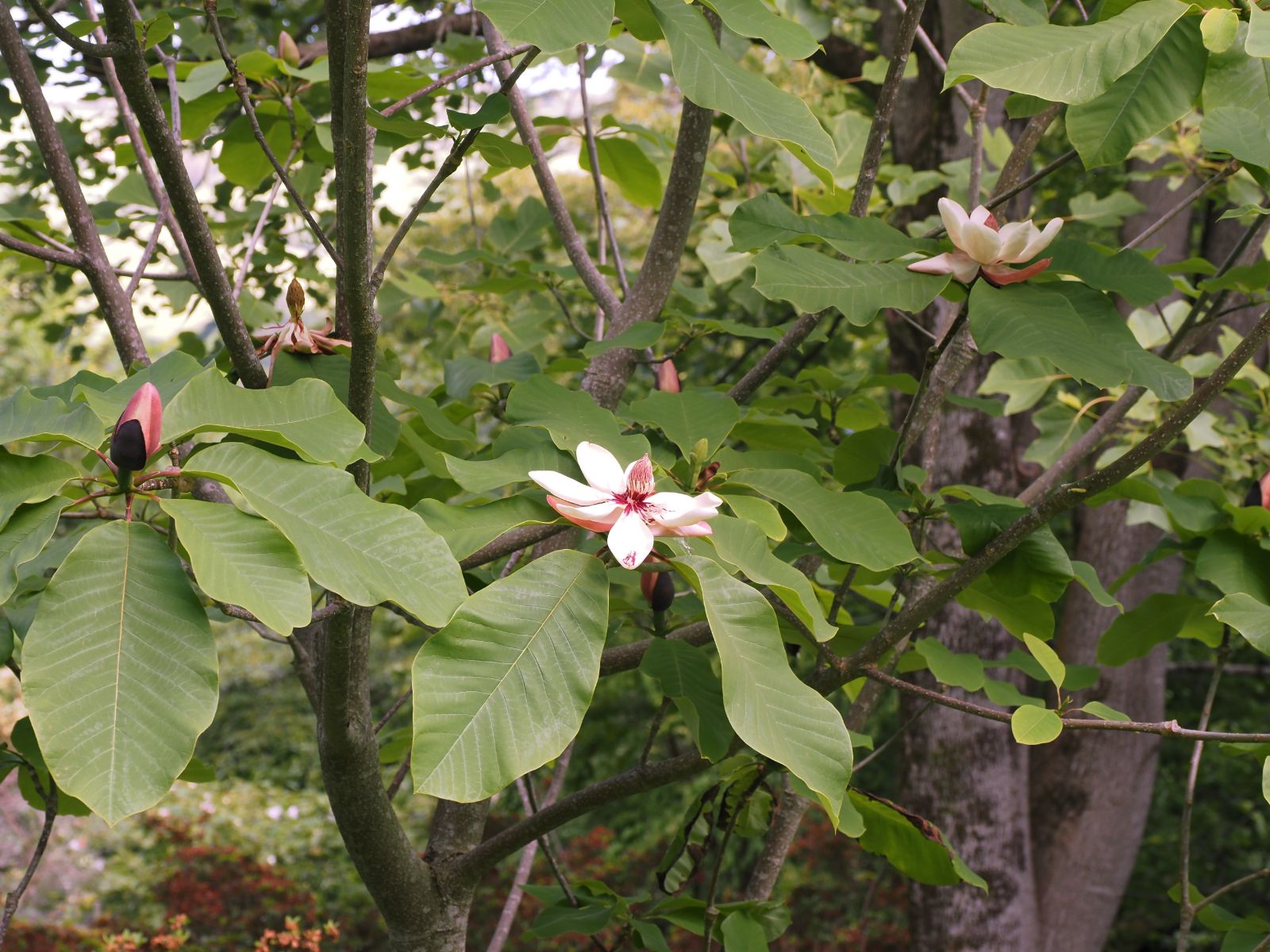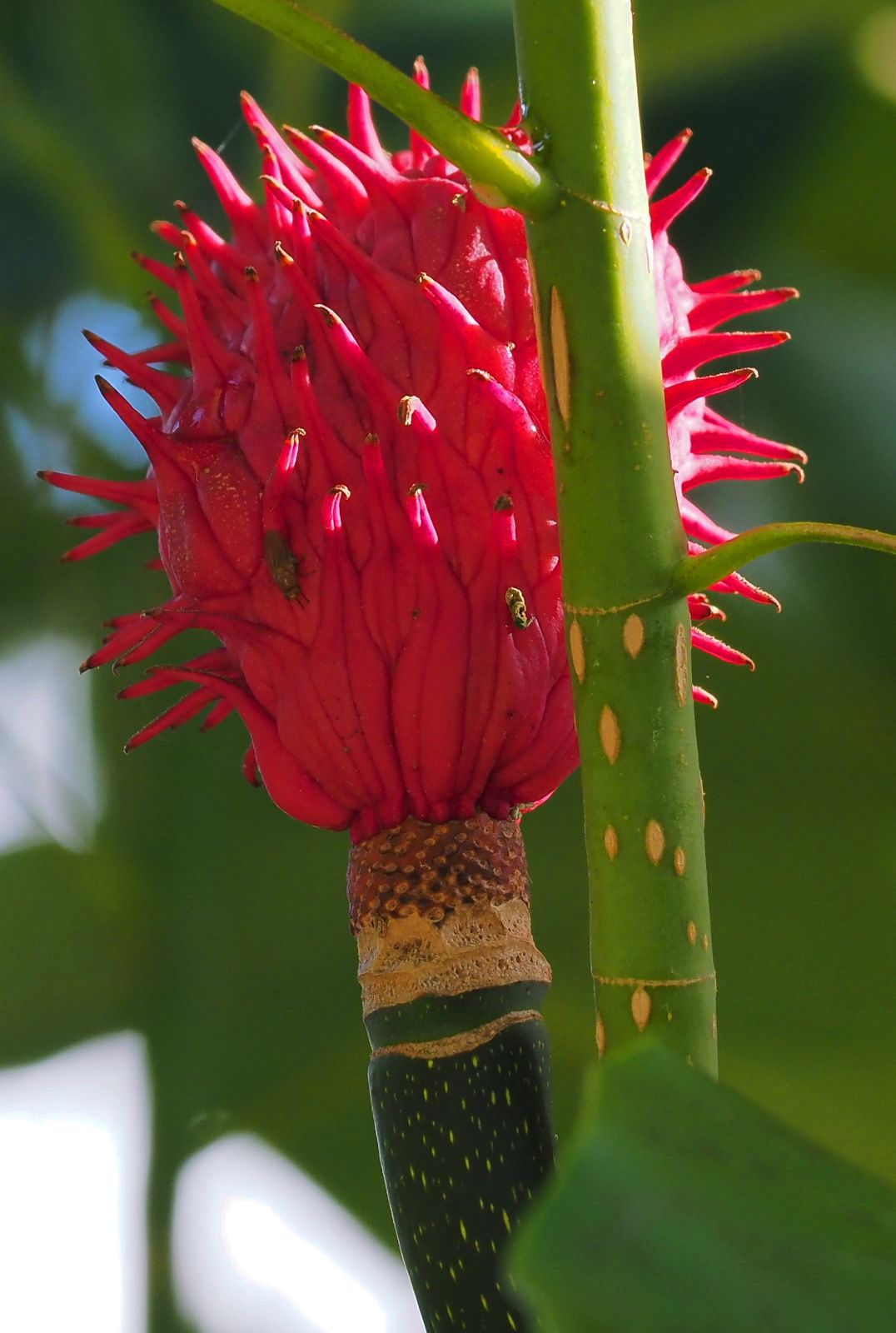Magnolia obovata
Sponsor
Kindly sponsored by
The Roy Overland Charitable Trust

Credits
Julian Sutton (2022)
Recommended citation
Sutton, J. (2022), 'Magnolia obovata' from the website Trees and Shrubs Online (treesandshrubsonline.
Genus
- Magnolia
- Section Rhytidospermum
Common Names
- Japanese Big-leaf Magnolia
- White Bark Magnolia
- Hō-no-ki
- ri ben hou po
Synonyms
- Magnolia hypoleuca Sieb. & Zucc.
- Houpoea obovata (Thunb.) N.H. Xia & C.Y. Wu
Infraspecifics
Other taxa in genus
- Magnolia acuminata
- Magnolia × alba
- Magnolia amabilis
- Magnolia amoena
- Magnolia aromatica
- Magnolia biondii
- Magnolia × brooklynensis
- Magnolia campbellii
- Magnolia cathcartii
- Magnolia cavaleriei
- Magnolia caveana
- Magnolia champaca
- Magnolia changhungtana
- Magnolia chapensis
- Magnolia compressa
- Magnolia conifera
- Magnolia Cultivars A
- Magnolia Cultivars B
- Magnolia Cultivars C
- Magnolia Cultivars D
- Magnolia Cultivars E
- Magnolia Cultivars F
- Magnolia Cultivars G
- Magnolia Cultivars H–I
- Magnolia Cultivars J
- Magnolia Cultivars K
- Magnolia Cultivars L
- Magnolia Cultivars M
- Magnolia Cultivars N–O
- Magnolia Cultivars P
- Magnolia Cultivars Q–R
- Magnolia Cultivars S
- Magnolia Cultivars T
- Magnolia Cultivars U–V
- Magnolia Cultivars W–Z
- Magnolia cylindrica
- Magnolia dandyi
- Magnolia dawsoniana
- Magnolia de Vos and Kosar hybrids
- Magnolia decidua
- Magnolia delavayi
- Magnolia denudata
- Magnolia doltsopa
- Magnolia duclouxii
- Magnolia ernestii
- Magnolia figo
- Magnolia floribunda
- Magnolia × foggii
- Magnolia fordiana
- Magnolia foveolata
- Magnolia fraseri
- Magnolia fulva
- Magnolia globosa
- Magnolia × gotoburgensis
- Magnolia grandiflora
- Magnolia grandis
- Magnolia Gresham hybrids
- Magnolia guangdongensis
- Magnolia hookeri
- Magnolia insignis
- Magnolia Jury hybrids
- Magnolia × kewensis
- Magnolia kobus
- Magnolia kwangtungensis
- Magnolia laevifolia
- Magnolia lanuginosa
- Magnolia leveilleana
- Magnolia liliiflora
- Magnolia × loebneri
- Magnolia lotungensis
- Magnolia macclurei
- Magnolia macrophylla
- Magnolia martini
- Magnolia maudiae
- Magnolia nitida
- Magnolia officinalis
- Magnolia opipara
- Magnolia × proctoriana
- Magnolia × pruhoniciana
- Magnolia rostrata
- Magnolia salicifolia
- Magnolia sapaensis
- Magnolia sargentiana
- Magnolia sieboldii
- Magnolia sinensis
- Magnolia sinica
- Magnolia sinostellata
- Magnolia × soulangeana
- Magnolia sprengeri
- Magnolia stellata
- Magnolia tamaulipana
- Magnolia × thomsoniana
- Magnolia tripetala
- Magnolia × veitchii
- Magnolia virginiana
- Magnolia × wieseneri
- Magnolia wilsonii
- Magnolia xinganensis
- Magnolia yunnanensis
- Magnolia yuyuanensis
- Magnolia zenii
Deciduous tree to 30 m. Bark grey, longitudinally fissured. Young branchlets 6–8 mm in diameter, glabrous, green becoming purple; vegetative buds glabrous. Leaves clustered. Leaf blade obovate, 20–38(–45) × 12–18(–20) cm; both surfaces with curved white hairs, lower surface glaucous, upper green; secondary veins 20–24 on each side of midvein; base cuneate; apex shortly acute. Petiole 2.5–4.5(–7) cm, glabrous or white villous at first; stipular scar at least ½ as long as petiole. Flowers cupular, 14–20 cm across, erect, very fragrant. Tepals 9–12; outer 3 yellowish green, flushed red beneath, shorter; inner 6 or 9 tepals milky white (rarely pink in cultivated plants), obovate to elliptic-obovate, 8.5–12 × 1.5–4.5 cm. Stamens 1.5–2 cm; filaments purplish red; connective exserted and forming a mucro. Gynoecium ~3 cm. Fruit red when mature, terete, 12–20 × ~6 cm, pendulous; mature carpels long beaked, basal ones decurrent along receptacles and becoming cuneate at base; testa bright red; endotesta black. Flowering May–June (Japan, UK), fruiting September–October (China). (Xia, Liu & Nooteboom 2008; Chen & Nooteboom 1993; Ohwi 1965).
Distribution Japan Honshu, Hokkaido, Kyushu, Shikoku Russia S Kuril Islands
Habitat Moist to mesic forests, 100–1800 m.
USDA Hardiness Zone 5-8
RHS Hardiness Rating H6
Conservation status Least concern (LC)
This fast-growing deciduous species has large leaves clustered towards the shoot tips in false whorls, heavily scented, rather waterlily-like white flowers in early summer, and long red fruits. Usefully hardy, Bean (1981) considered it ‘one of the most beautiful of all northern trees both in leaf and flower’.
Magnolia obovata quite closely resembles its Chinese relatives in Section Rhytidospermum M. officinalis and M. rostrata, sharing with them the habit of making false whorls at the ends of long shoots. It differs from M. officinalis in its glabrous vegetative buds, its larger flowers and fruits, and its strikingly glaucous, bloomy but less hairy leaf underside; from M. rostrata in its stronger fragrance, its upright rather than drooping fruits, and in any hairs on the main veins beneath being whitish rather than rufous; and from both these species in its purple-tinted rather than grey young bark. The American M. tripetala is usually a smaller, more shrubby plant with even larger leaves, and malodorous flowers.
To the annoyance of gardeners its accepted name oscillated during the 20th century between M. hypoleuca (published 1846, the name referring to the white-bloomy undersides of the leaves) and Thunberg’s earlier (1794) M. obovata. The debate was purely nomenclatural, centred on the interpretation of Thunberg’s publication (Hsu 2006). Confusion with the Chinese M. officinalis clouded early discussion of the species in gardens.
Ultimately a medium to large, upright forest tree, it can look open and gaunt when young (Bean 1981). Under optimal conditions (a sunny, sheltered site on rich, moisture-retentive, slightly acidic soil) a young tree can put on as much as 1.2 m growth per year. Its soft, close-grained, pale yellowish-brown wood is used for furniture and small items; Hsu (2006) reports seeing coppice regeneration in Hokkaido. It has been tested for suitability as a timber tree in Germany (Anisko & Czekalski 1991).
The predominantly white flowers appear on leafy shoots during June and early July in Britain, but the flowering buds were formed the previous season. A few trees have been noted whose inner as well as outer tepals are distinctly pink. The crimson filaments and yellow anthers make a conspicuous central mass. The scent is heavy and fruity, ‘an intoxicating, ambrosial bouquet of melons, bananas and grapes’ (Hsu 2006). While the pollinator(s) is unknown, genetic evidence from a population in central Honshu suggested that there were frequent self-pollination events (as generated by inefficient, less mobile beetles), but also occasional inputs of pollen from outside the population, suggesting less common visits by a highly mobile, efficient pollinator (Isagi et al. 2004). High levels of inbreeding depression among inbred seedlings suggest that the relatively few outbred seedlings will contribute disproportionately to the next generation (Ishida 2006). This is worth noting when raising wild-origin seedlings – ‘runty’ seedlings may be the majority. The species flowers from seed at 10 – 15 years. Seed propagation is the norm, while it is sometimes used as a rootstock for M. × wiesneri and cultivars within this group (Hsu 2006).
M. obovata was introduced to the West in 1865, as seed received by Thomas Hogg who planted one of the seedlings in his brother’s New York City garden, where it thrived (Hsu 2006). It probably reached Europe in the 1870s and must have flowered by 1893, when it was exhibited to the Royal Horticultural Society by James Veitch. At Kew, grown from seed received from a Japanese nursery in 1890, it first flowered in 1905 (Skan 1906). Multiple European introductions seem to have been from Japanese nurseries, so wild provenance is unknown. The species has a wide north–south wild distribution, and one might expect variation in hardiness. Northerly material from Hokkaido is grown from several more recent collections (including EHOK 17 as grown at Howick Hall, Northumberland – Howick Hall Arboretum 2021).
Despite its general hardiness in Britain, most recorded examples are in southern and western areas. Large specimens include one at Stourhead, Wiltshire (21.5 m × 148 cm, 2016) and an imposing tree at Borde Hill, W Sussex (15 m × 320 cm, 2015), while in central England there is a specimen at Birmingham Botanical Gardens (11 m × 127 cm, 2017 – The Tree Register 2021). Elsewhere in Europe it grows well as far north as southern Sweden, with very significant examples at the Kiviks Esperöds Arboretum, and Hokkaido-provenance trees at Gothenburg Botanical Garden (Arboretum Mustila 2021; Gothenburg Botanical Garden 2021); young trees of Hokkaido provenance are also proving hardy at Arboretum Mustila, making this ‘one of the most tropical-looking tree species which can be grown in Finland’ (Arboretum Mustila 2021). It proves hardy in Poland, where it has been grown (if rarely) for approaching 200 years (Anisko & Czekalski 1991), and in the Czech Republic (Treseder 1978).
In North America it is grown quite widely, away from the very coldest and driest areas, and can be seen in major collections in many areas (e.g. Arnold Arboretum 2021; Morton Arboretum 2021; Missouri Botanical Garden 2021; University of British Columbia 2021; University of Guelph 2021).
In gardens M. obovata has been crossed with M. sieboldii to produce the extravagantly scented M. × wieseneri, with M. wilsonii to give M. × gotoburgensis, and with M. tripetala to produce ‘Silver Parasol’.
'Lydia'
Selected for its narrow, upright crown. Flowers lemon-scented, 15–17.5 cm across in June; 6 creamy white inner tepals, 3 pink flushed outer tepals. Rich maroon fruits freely produced. Selected by Polly Hill of Martha’s Vineyard, MA from seedlings sent by Tsuneshige Rukujo in Japan; named for her granddaughter.
'Pink Flush'
Tepals flushed pink, especially the outer surfaces of the outer ones. Raised by Francis Hanger at RHS Garden Wisley in the 1940s or 50s, out of a batch of seedlings from Exbury, Hampshire, where he had previously worked. Some of the remainder were planted at the Savill and Valley Gardens, Windsor: at least one was also pink flowered.

